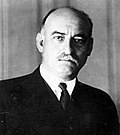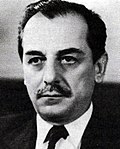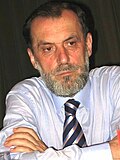| Serbo-Croatian: Ministarstvo inostranih poslova/Министарство иностраних послова Slovene: Ministrstvo za zunanje zadeve Macedonian: Министерството за надворешни работи | |
 | |
 The Ministry of Foreign Affairs Building | |
| Ministry overview | |
|---|---|
| Formed | 7 December 1918 |
| Dissolved | 4 June 2006 |
| Jurisdiction | Yugoslavia |
| Headquarters | Ministry of Foreign Affairs Building, 24–26 Kneza Miloša, Belgrade 44°48′12″N20°27′24″E / 44.8032°N 20.4566°E |
| Ministers responsible |
|
| Parent department | Federal Executive Council (1953–1992) |
The Ministry of Foreign Affairs of Yugoslavia was the ministry responsible for representing the Kingdom of Yugoslavia internationally from 1918 to 1941 and the Socialist Federal Republic of Yugoslavia from 1945 to 1992. It may also refer to the ministry which represented Serbia and Montenegro (officially named the Federal Republic of Yugoslavia between 1992 and 2003) from 1992 to 2006.





































